Have a friend in Wells said he seen some really big coyotes north of Wells
With a unanimous vote the Nevada Board of Wildlife Commissioners (Commission) approved a motion directing the Nevada Department of Wildlife (NDOW) to draft a proposed regulation that will reclassify wolves as an unprotected species rather than as a game mammal. That same motion also directs the department to petition the U.S. Fish & Wildlife Service to delist wolves in Nevada as they were never established in Nevada.
The Commission's vote to reclassify wolves was cast during its Sept. 24-25 meeting in Las Vegas. Wolves were first classified as a game mammal in August 2008. Also on the meeting agenda were proposals to create black bear and non-trophy bull elk hunting seasons, and to reclassify mountain lions.
During recent years, residents along the Sierra Front in Northwestern Nevada have seen a significant increase in human-bear interactions. While this increase is due in part to human development and behavior, another contributing factor is the black bear population itself.
Carl Lackey, NDOW wildlife biologist and bear expert said, "Nevada's bear population should not be viewed as an isolated population due to the fact that it is part of the contiguous Sierra Nevada population in California. That population is estimated to be in the thousands."
Current estimates place Nevada's bear population along the Sierra Front at between 200 and 300 animals. Lackey, who spends much of his time dealing with bear-related problems, believes this number is conservative. According to his data, the Sierra Front bear population is growing at an annual estimated rate of about 16 percent. The NDOW Black Bear Management Plan identifies the agency's management objective as maintaining "well-distributed, viable black bear populations within suitable habitat throughout their native range in Nevada."
After a lengthy discussion, the commission voted 8-0 in favor of asking NDOW staff to draft regulations for a spring bear hunt that would consist of a month-long any-legal-weapon season followed by a week-long archery season. Included in the motion was language requiring successful tag applicants to complete a bear education course similar to that required for bighorn sheep. A bear tag would cost $100, and the use of bait or hounds would be prohibited during the spring bear season.
A subsequent motion and vote added a fall bear hunt to the regulation request. Parameters would be similar to those of the spring hunt but the use of hounds would be permitted during the fall season. The commission decision also calls for the bear hunt to be reevaluated after the first year. A draft regulation will be considered at the December commission meeting in Reno.
Another of Nevada's game animals whose population is growing is the Rocky Mountain elk. While that has resulted in increased hunting opportunity, there are some hunters who are concerned that there are too many bulls in the state's elk herds. Cory Lytle, of the Lincoln County Advisory Board to Manage Wildlife, proposed the creation of a non-trophy bull elk season to reduce the bull-cow ratio. A non-trophy bull would be defined as "a bull with five points or fewer on at least one side of its antlers. This includes damaged or broken antlers."
The commission voted 7-1 in favor of this proposal and directed NDOW to draft the necessary regulations to create a non-trophy bull elk hunt that will be in place by the 2011 big game tag draw.
Also considered by the commission was a proposal to change the current classification of mountain lions from that of a game mammal to that of a furbearer or unprotected species. Commission members voted to table the discussion with no action taken
 Timberline Outfitters Guide Service
Timberline Outfitters Guide Service
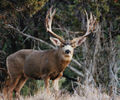 Nevada Outfitters & Guides Association
Nevada Outfitters & Guides Association
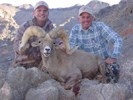 SilverGrand Outfitters
SilverGrand Outfitters
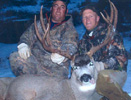 Hidden Lake Outfitters
Hidden Lake Outfitters
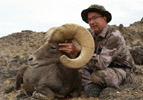 G&J Outdoors
G&J Outdoors
 Mountain Man Outfitters
Mountain Man Outfitters
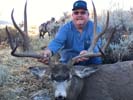 Nevada High Desert Outfitters
Nevada High Desert Outfitters
